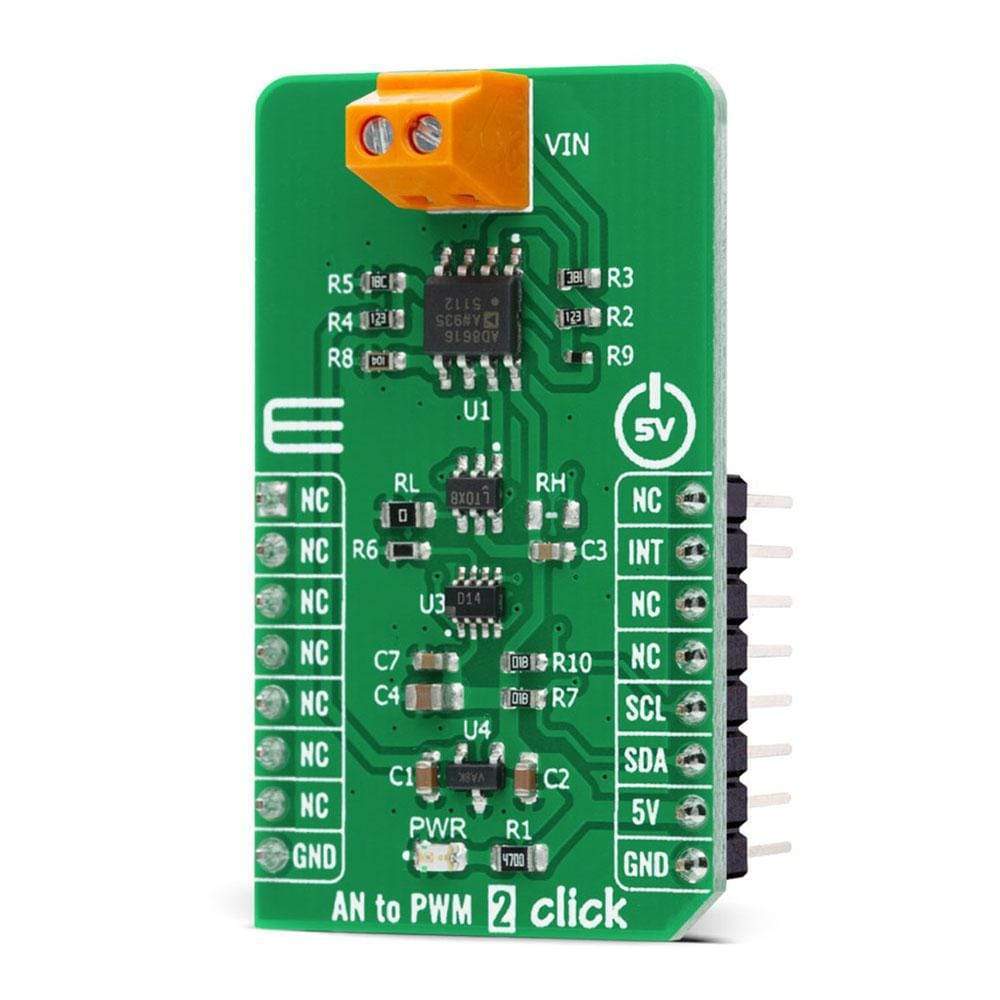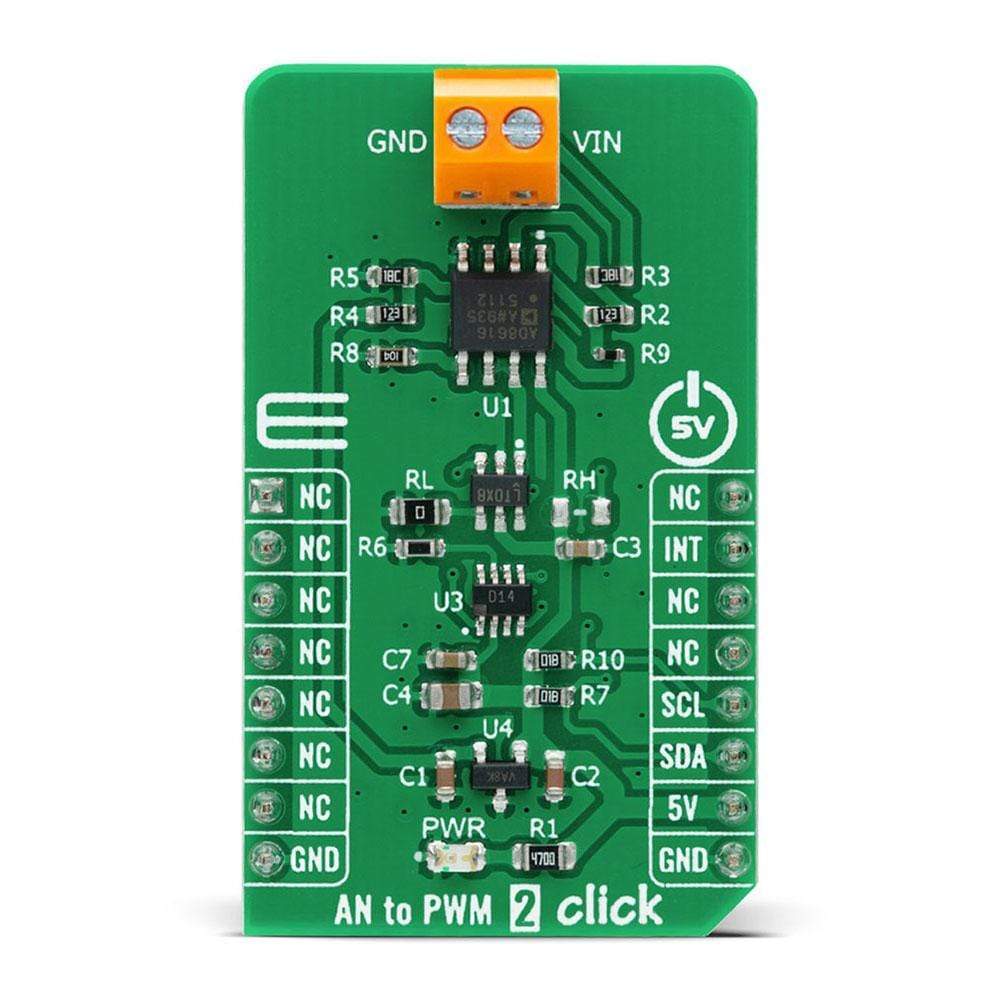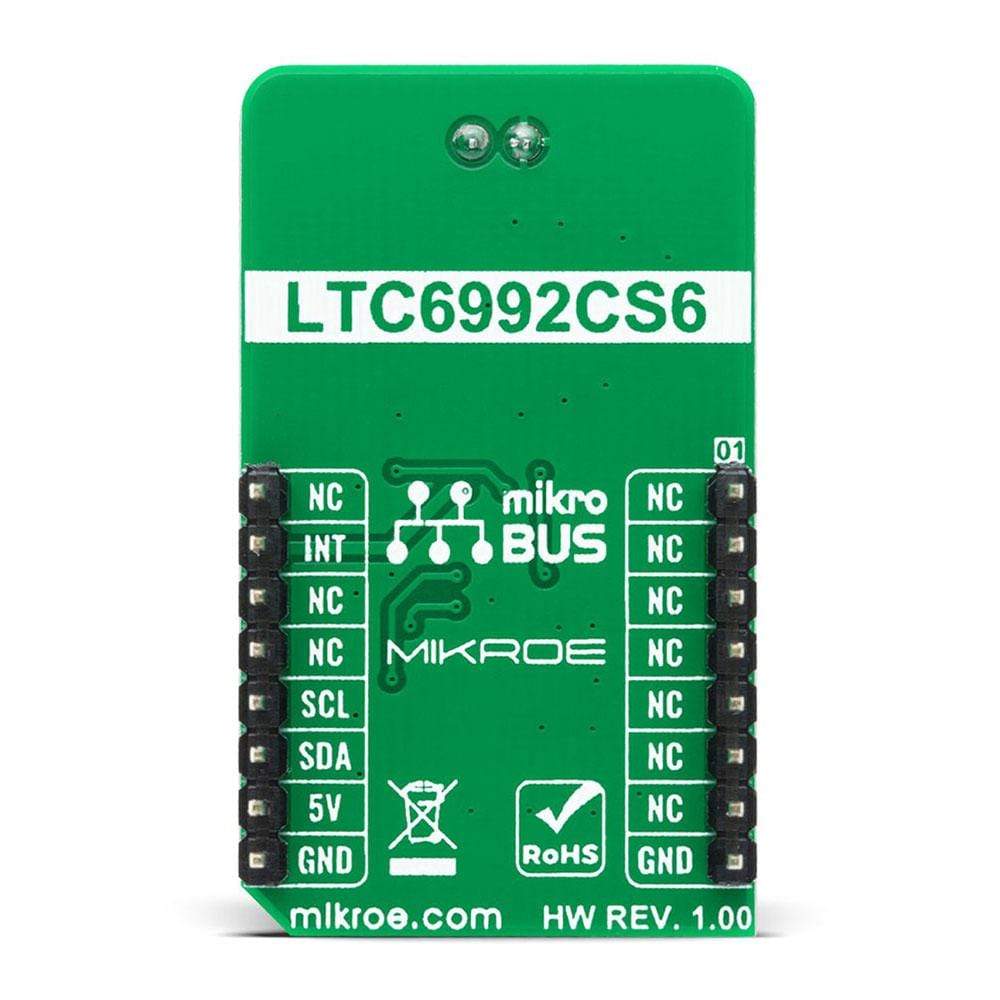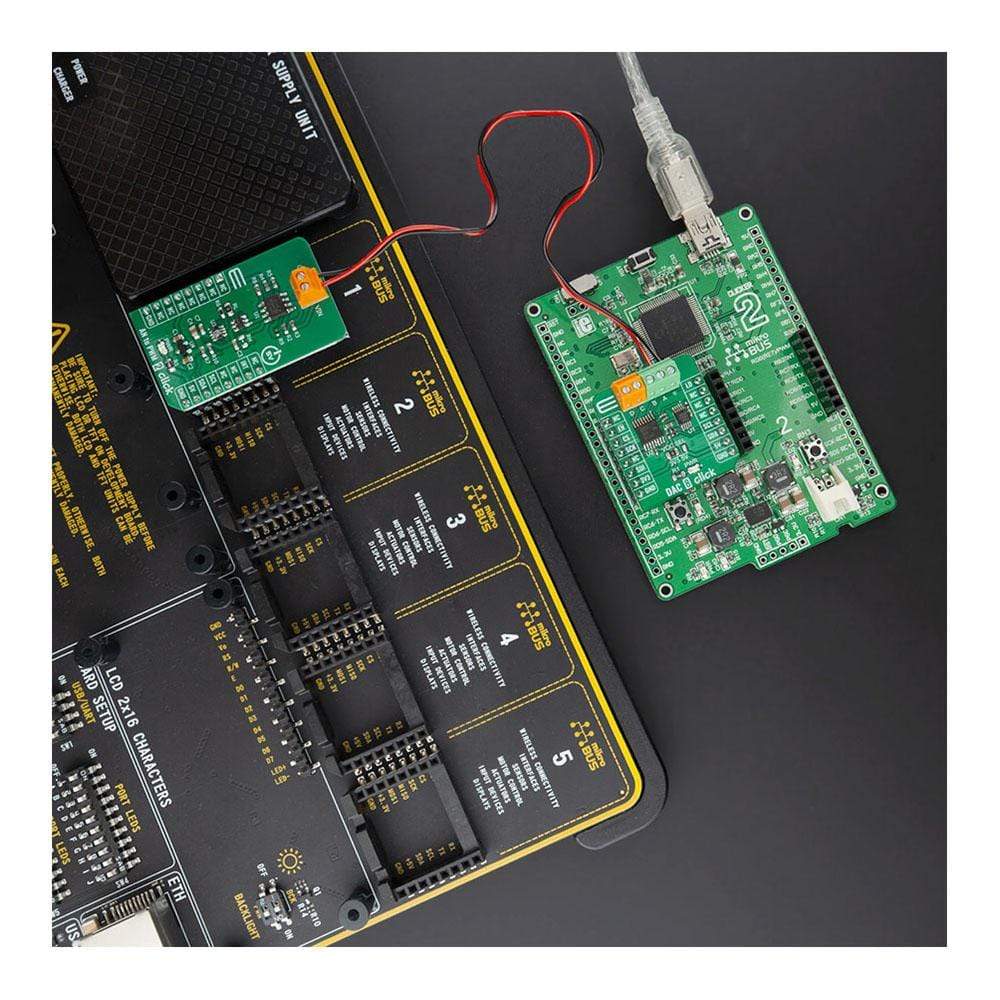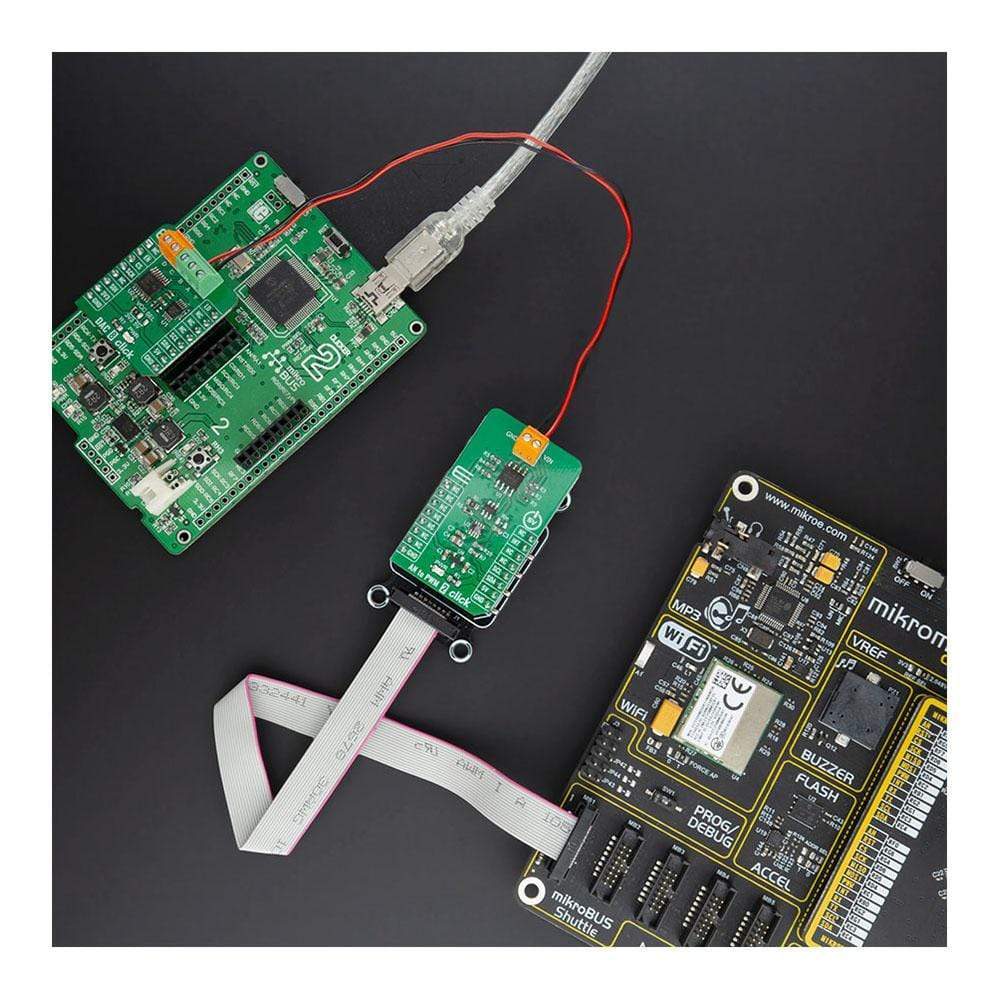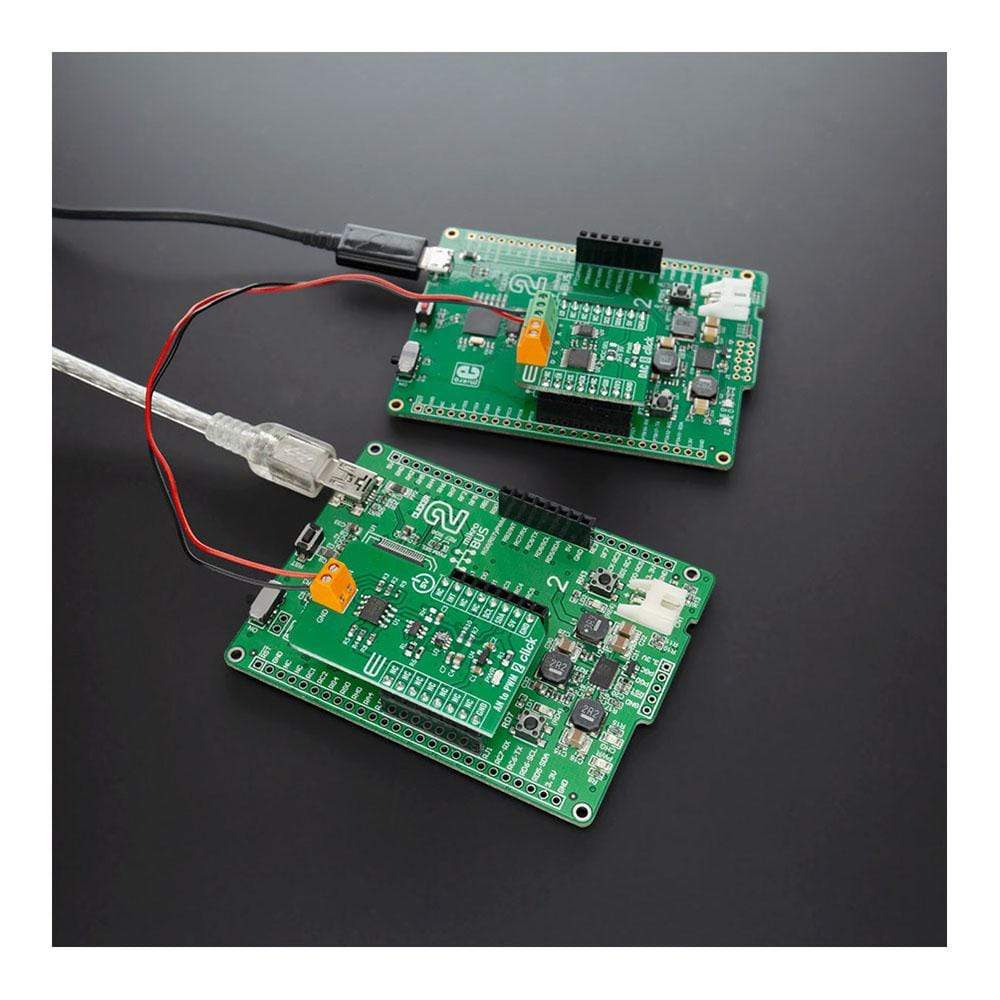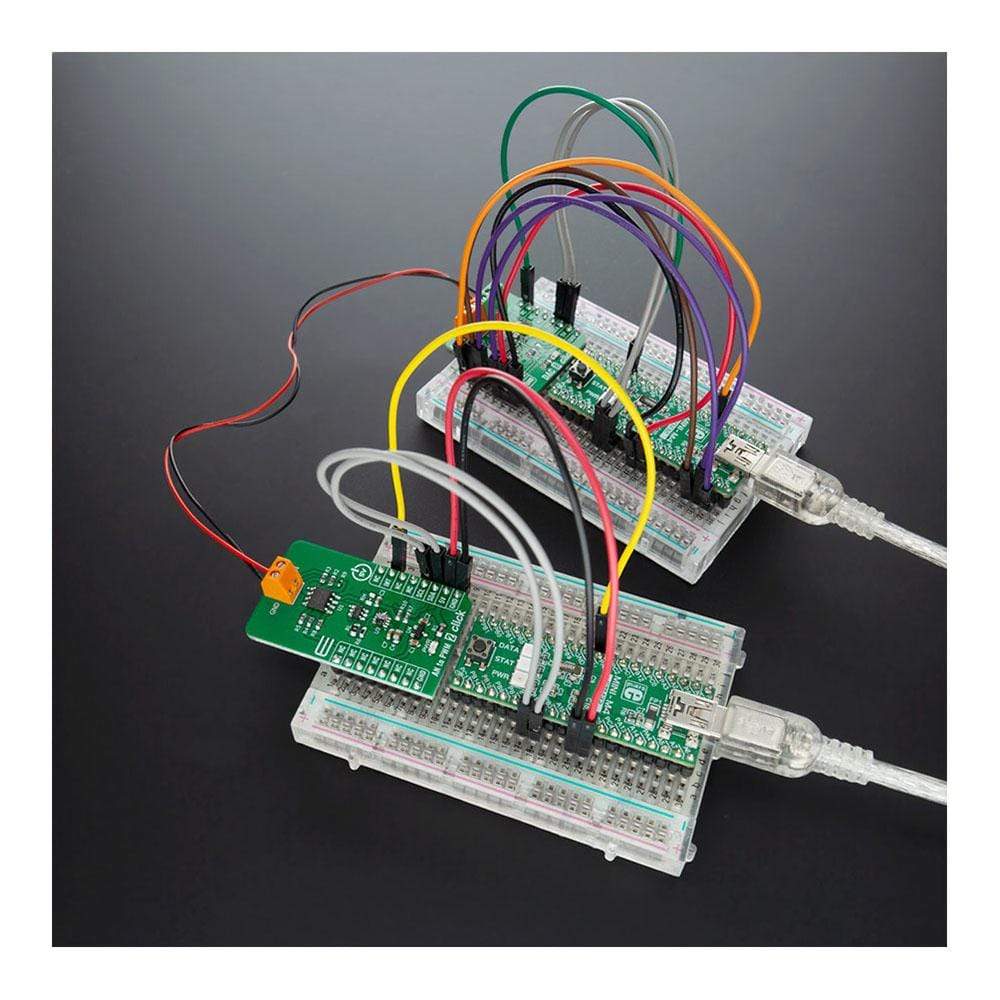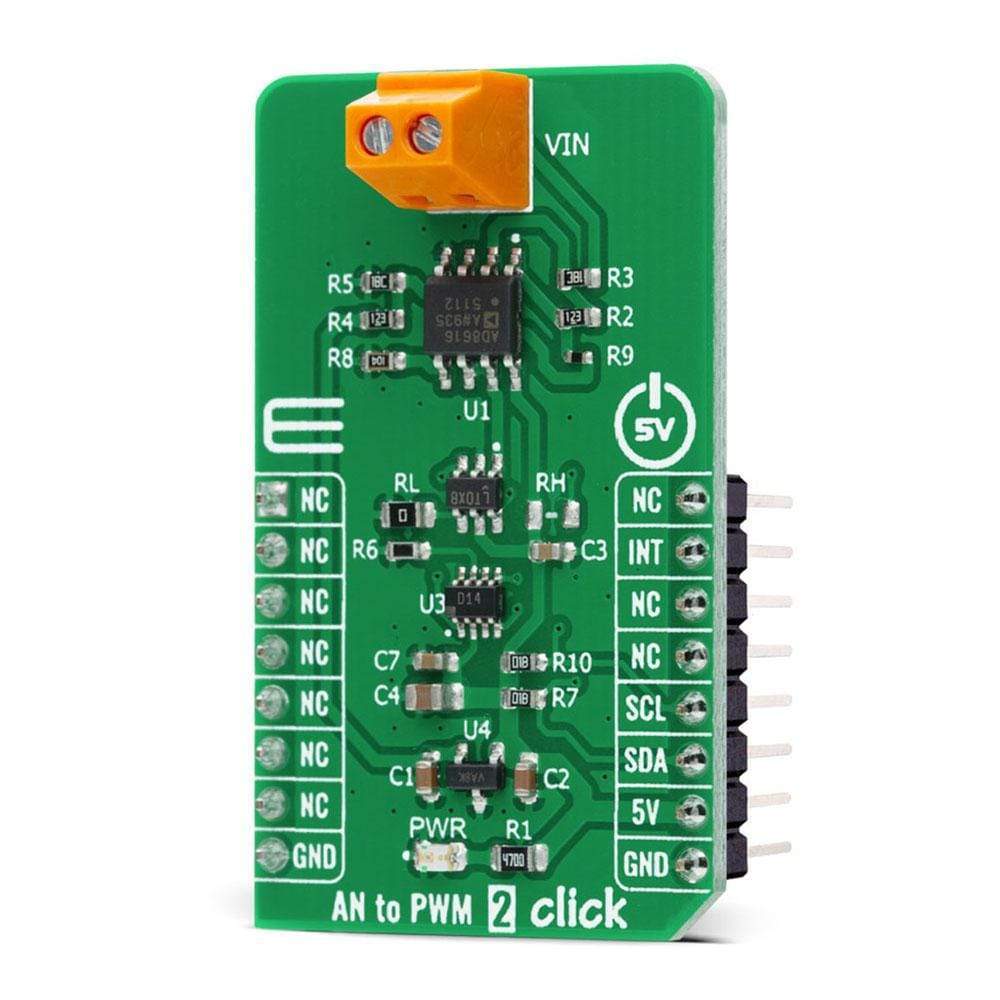
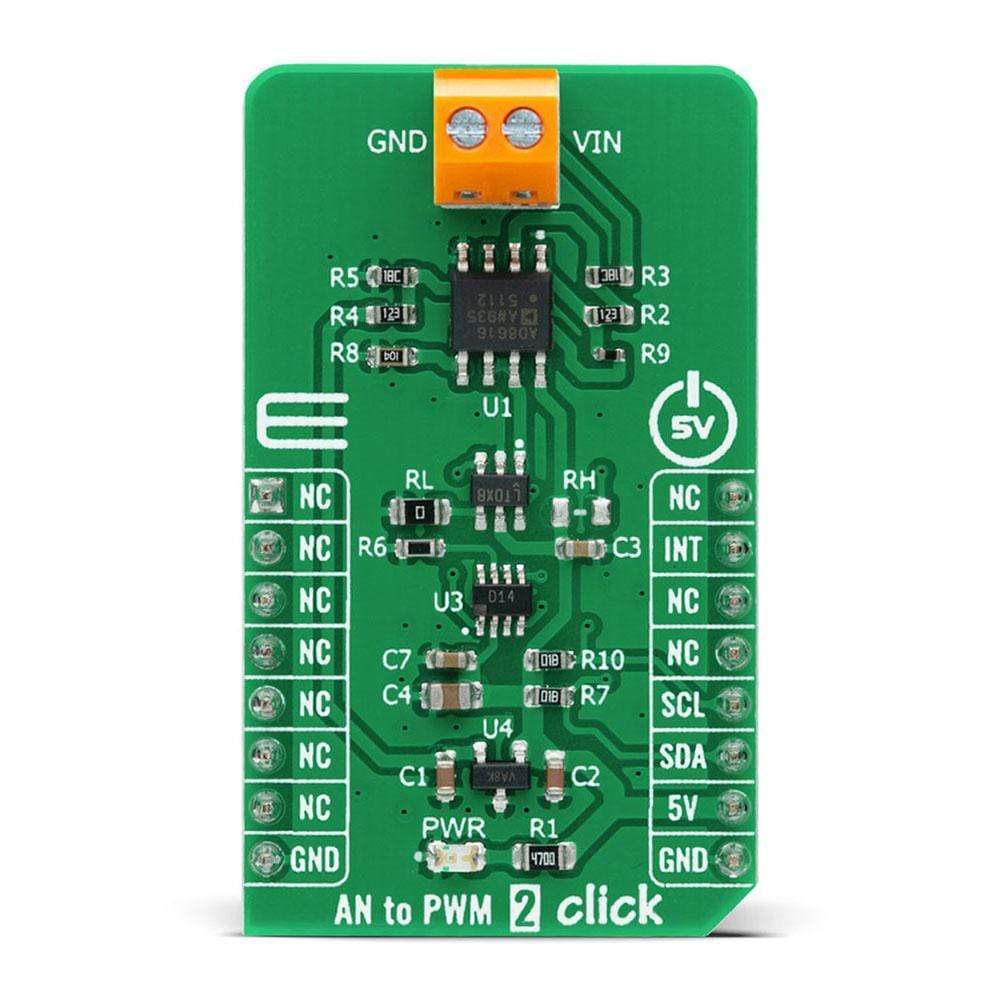
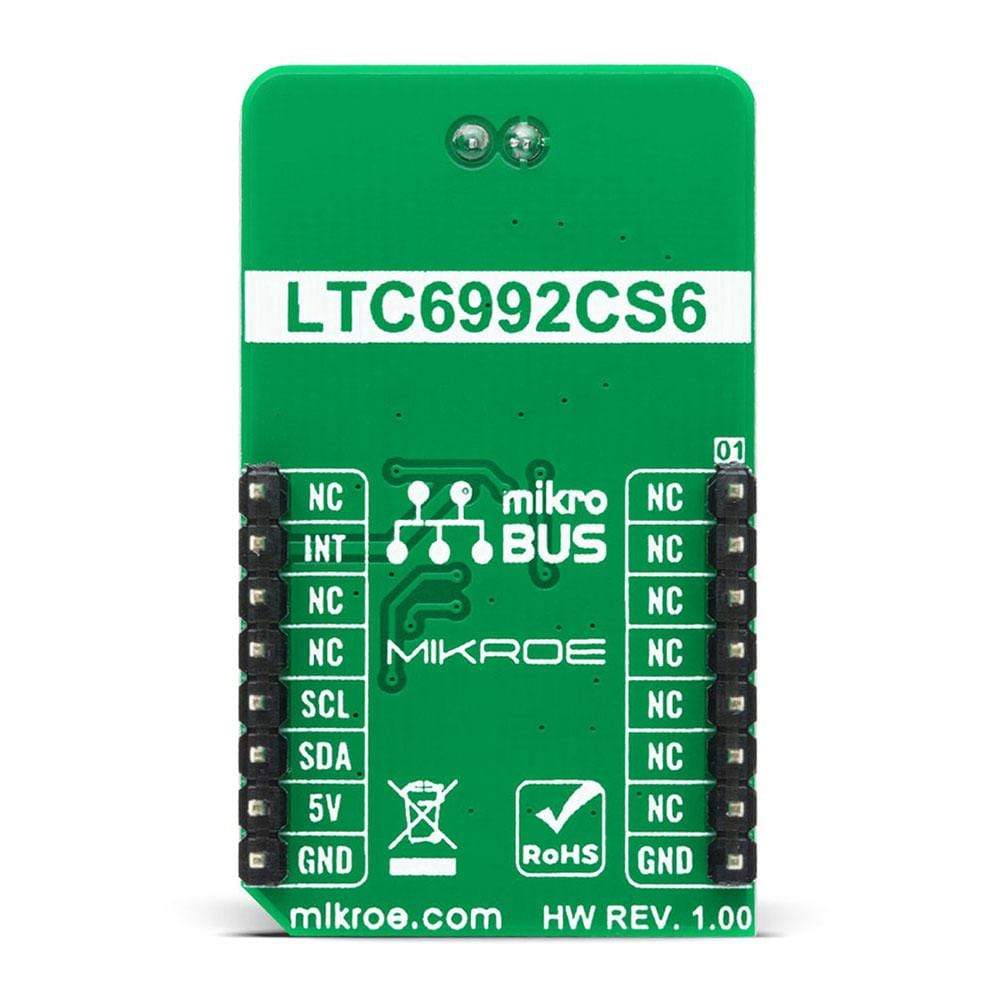
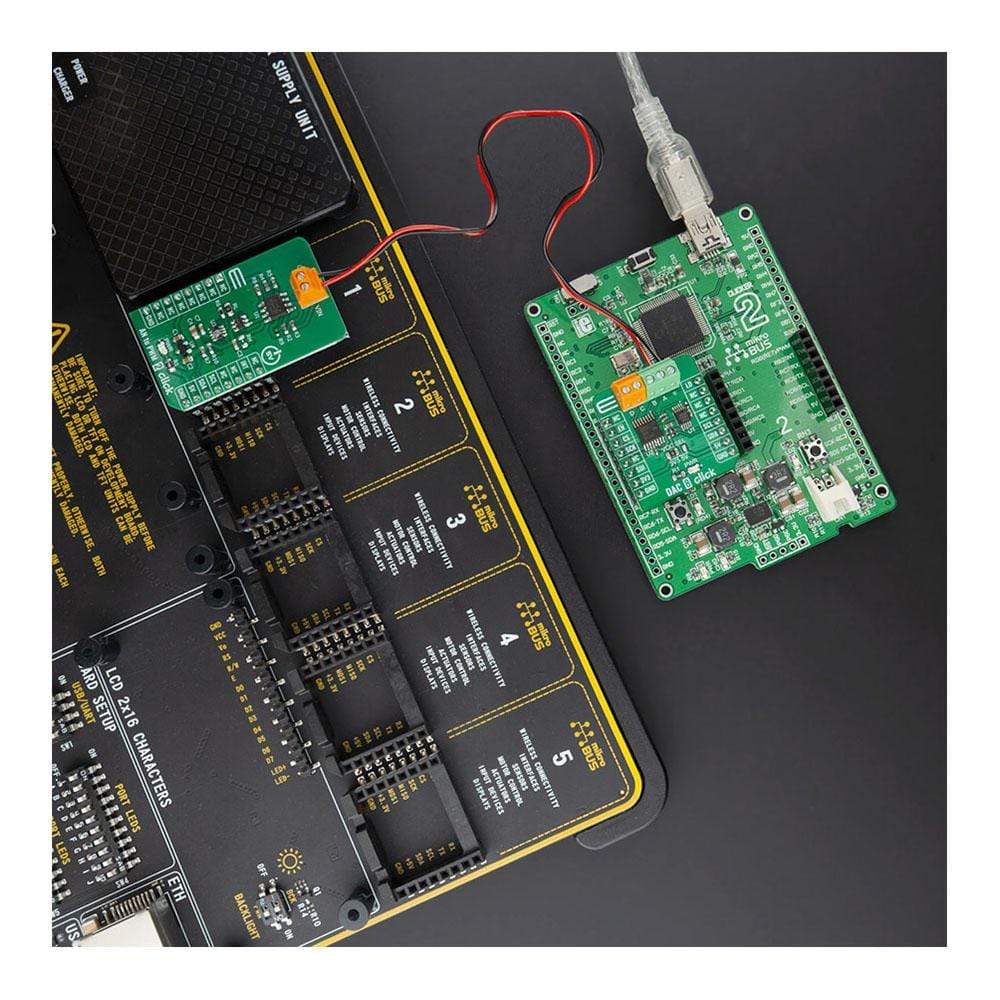
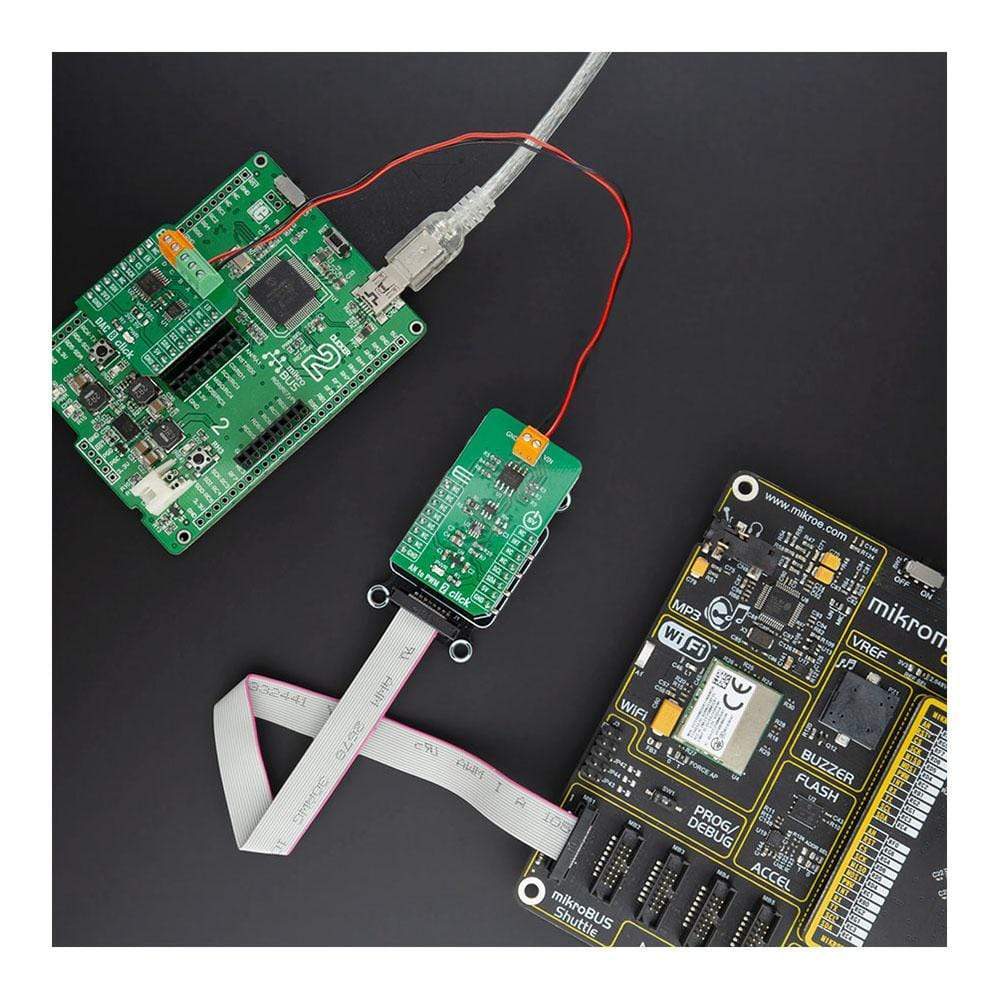
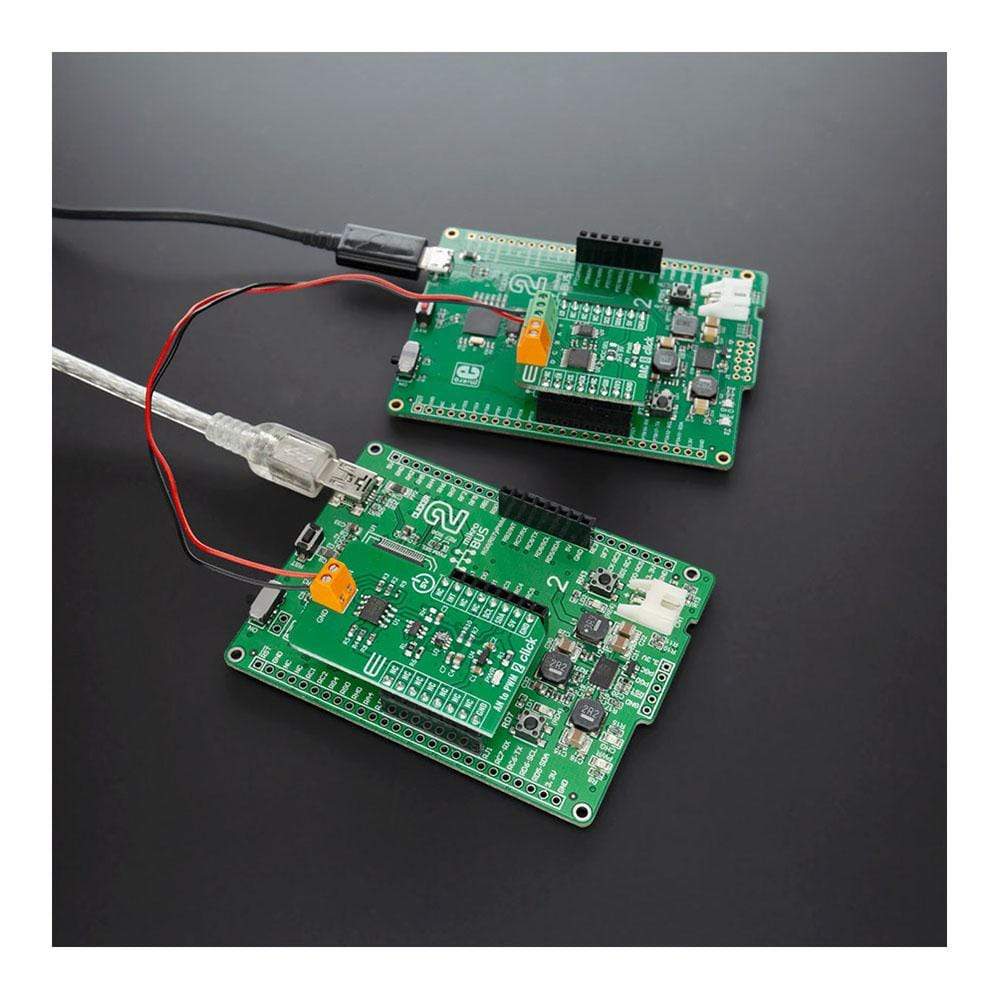
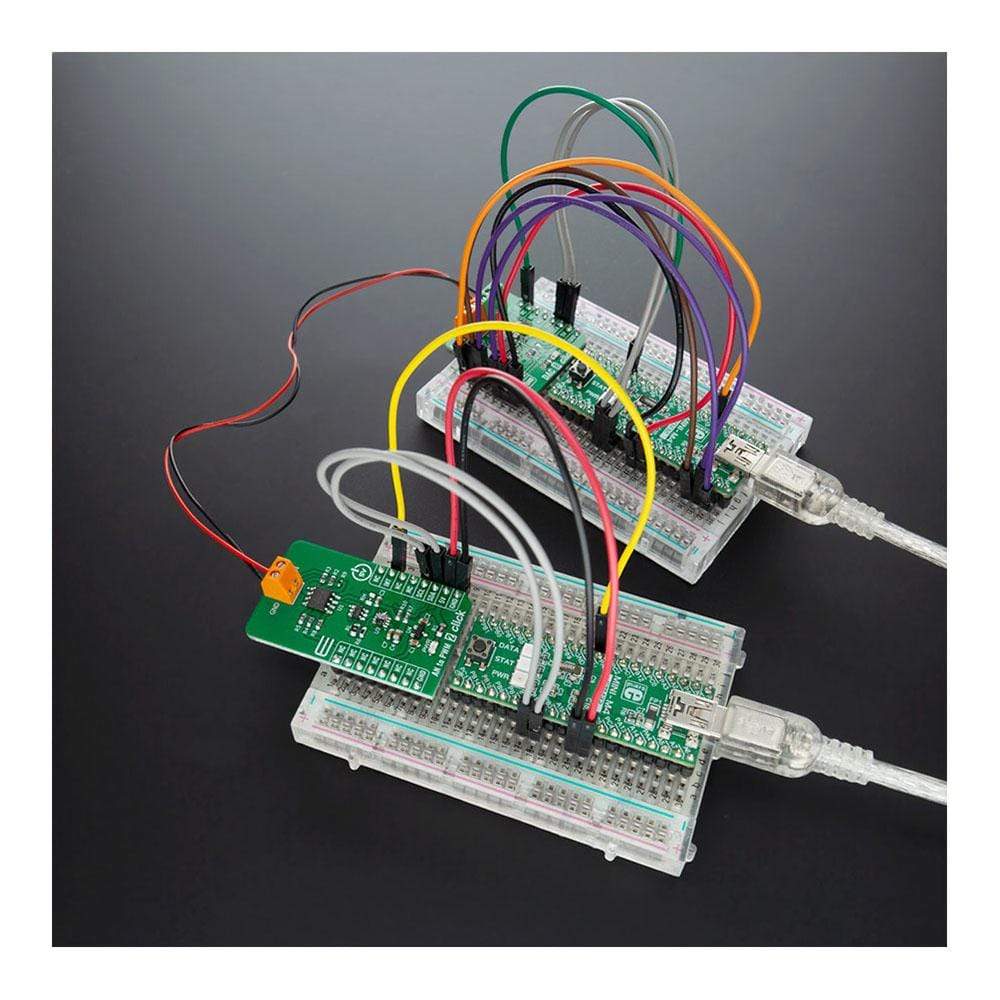
Overview
The AN to PWM 2 Click Board™ is a compact add-on board that contains an easy-to-use component that converts the value of the input analogue signal to a fixed frequency PWM voltage output, with a duty cycle proportional to the input voltage. This board features the LTC6992CS6, a silicon oscillator with an easy-to-use analogue voltage-controlled pulse width modulation (PWM) capability from Analog Devices. It features the PWM signal controlled by analogue input in the range of -2.5V to 2.5V, frequency range up to 1 MHz, frequency error less than 1.7%, and it has good temperature stability. It has many features that make it well suited for heater control, PWM servo loops, LED dimming, signal isolation, and other duty cycle control applications.
The AN to PWM 2 Click Board™ is supported by a mikroSDK compliant library, which includes functions that simplify software development. This Click Board™ comes as a fully tested product, ready to be used on a system equipped with the mikroBUS™ socket.
Downloads
How Does The AN to PWM 2 Click Board Work?
The AN to PWM 2 Click Board™ is based on the LTC6992CS6, a voltage-controlled PWM generator from Analog Devices. This device is chosen because it keeps its output clocking at all times, and it offers glitch-free, a first cycle-accurate startup within 500μs of Power-On. The output of the this Click board™ can source or sink up to 16 mA, and it has a linear response, so applying a voltage in a range of -2.5 to 2.5V on its input, will result in generating the PWM pulse train with duty cycle linearly proportional to the input voltage. The output PWM signal is brought to the INT pin of the mikroBUS™ socket to enable fast and precise duty cycle measurement using the interrupt routines.
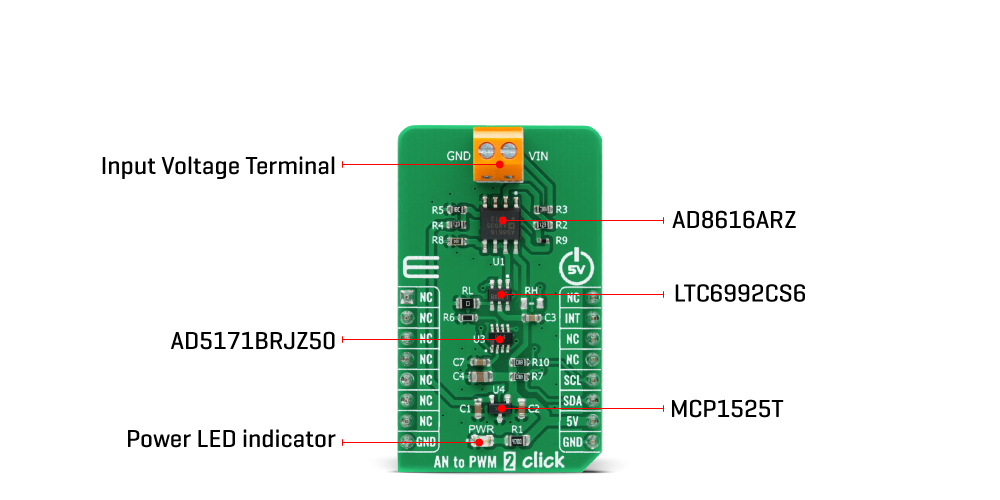
The LTC6992CS6 has a MOD pin which represents pulse-width modulation input where is necessary to bring an analog signal. To bring the corresponding signal to that pin, this Click board™ uses an analog circuitry made of OpAmp AD8616ARZ from Analog Devices. In the first part of the circuit, amplifier OPA1 attends to adjust the input signal through a reference voltage of 2.5V by the MCP1525 from Microchip and applied input voltage in a range of -2.5 to 2.5V. The next part of the circuit is the voltage divider and amplifier OPA2 which has the function of a buffer, after which the signal required by the MOD pin of the LTC6992CS6 is obtained.
The output frequency can range up from 3.81Hz to 1MHz and is controlled via the AD5171, a 64-position (OTP) digital potentiometer from Analog Devices, which programs the LTC6992CS6's internal master oscillator frequency. The output frequency is determined by this master oscillator and an internal frequency divider programmable to eight settings from 1 to 16384. It communicates with MCU using the standard I2C serial interface that operates at clock rates up to 400 kHz and represents the most accurate way to set the frequency. It's also left the possibility to adjust the frequency via resistors RH and RL by placing resistors of appropriate resistance.
The AN to PWM 2 Click Board™ is designed to be operated only with a 5V logic level. A proper logic voltage level conversion should be performed before the AN to PWM 2 Click is used with MCUs with different logic levels. More information about the LTC6992CS6's functionality, electrical specifications, and typical performance can be found in the attached datasheet. However, the Click board™ comes equipped with a library that contains easy-to-use functions, and a usage example that can be used as a reference for the development.
SPECIFICATIONS
| Type | ADC |
| Applications | Can be used for heater control, PWM servo loops, LED dimming, signal isolation, and other duty cycle control applications. |
| On-board modules | AN to PWM 2 Click is based on the LTC6992CS6, a voltage-controlled PWM generator from Analog Devices. |
| Key Features | Low power consumption, good temperature stability, wide frequency range, low frequency error, and more. |
| Interface | I2C |
| Compatibility | mikroBUS |
| Click board size | M (42.9 x 25.4 mm) |
| Input Voltage | 5V |
PINOUT DIAGRAM
This table shows how the pinout on the AN to PWM 2 Click Board™ corresponds to the pinout on the mikroBUS™ socket (the latter shown in the two middle columns).
| Notes | Pin |  |
Pin | Notes | |||
|---|---|---|---|---|---|---|---|
| NC | 1 | AN | PWM | 16 | NC | ||
| NC | 2 | RST | INT | 15 | INT | PWM OutPut | |
| NC | 3 | CS | RX | 14 | NC | ||
| NC | 4 | SCK | TX | 13 | NC | ||
| NC | 5 | MISO | SCL | 12 | SCL | I2C Clock | |
| NC | 6 | MOSI | SDA | 11 | SDA | I2C Data | |
| NC | 7 | 3.3V | 5V | 10 | 5V | Power Supply | |
| Ground | GND | 8 | GND | GND | 9 | GND | Ground |
ONBOARD SETTINGS AND INDICATORS
| Label | Name | Default | Description |
|---|---|---|---|
| LD1 | PWR | - | Power LED Indicator |
AN to PWM 2 CLICK ELECTRICAL SPECIFICATIONS
| Description | Min | Typ | Max | Unit |
|---|---|---|---|---|
| Input Supply Voltage | -2.5 | - | +2.5 | V |
| Output Current | - | ±20 | - | mA |
| Output Frequency | 3.81 Hz | - | 10 | MHz |
| Operating Temperature Range | -40 | - | +85 | °C |
| General Information | |
|---|---|
Part Number (SKU) |
MIKROE-4221
|
Manufacturer |
|
| Physical and Mechanical | |
Weight |
0.019 kg
|
| Other | |
Country of Origin |
|
HS Code Customs Tariff code
|
|
EAN |
8606027380327
|
Warranty |
|
Frequently Asked Questions
Have a Question?
Be the first to ask a question about this.

